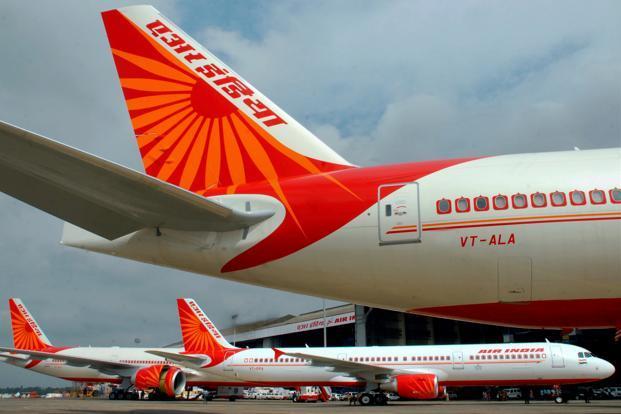Air India Sell-Off: Offloading 100% Stake Isn’t a Good Idea

Image Courtesy: Live Mint
After one failed attempt to sell off Air India during its first term, the Narendra Modi government has decided to expedite the process in its ongoing second stint in power. A group of ministers (GoM) led by the Home Minister Amit Shah has met once to take up the matter and is due to discuss it again in its next meeting.
Civil Aviation Minister Hardeep Singh Puri has said that all disinvestments will take place within set time limits. For Air India, the agenda includes transfer of its additional debt—that is, debt in excess of the Rs 29,464 crore that has been decided earlier—to Air India Assets Holdings Ltd (AIAHL). This, the government believes, will make the deal more attractive to private bidders.
The ministerial panel set up on Air India’s sell-off, which includes Finance Minister Nirmala Sitharaman, Commerce and Railway Minister Piyush Goyal, other than Puri, also discussed the prospects of the corporation’s employees. An official, who requested anonymity, says that the government plans to issue an Expression of Interest (EoI) by late October.
It seems that the government has learned from experience. It will likely significantly relax eligibility criteria for bidders in this attempt to divest its share in Air India. Last time round, it tried to divest 76% in Air India but no private entity showed any interest. This time, the government is considering offloading 100% of its stake in the ailing national carrier.
The government may also further relax the Foreign Direct Investment (FDI) rules so that foreign investors get the pilot’s chair in management of the carrier.
The same official says that among the major pending decisions are, fixing a fair price for Air India and handling its debt. The exact contours of the process of disinvestment and the matter of retaining its employees follow. There are plans afoot for staff above a certain age getting a golden handshake and of extending medical facilities to those who are already retired or would retire in coming year.
Another critical issue still to be decided is the segregation and privatisation of Air India’s subsidiaries, AI Express, AASL, AISATS, AIESL and the Hotel Corporation of India. There are strong indications that the entire process will last through this financial year.
Grapevine says that a prominent Gulf-based carrier and a major Indian multinational conglomerate in Mumbai have shown considerable interest in picking up stakes in the national carrier. Loss-making Air India has stayed afloat for the last few years on a Rs 30,000-crore bailout plan that the previous United Progressive Alliance government had cleared in 2012, during its second term. Air India’s total debt is about Rs 60,000 crore, including long and short-term working capital loans.
There is no indication so far that Air India’s employees, who are opposing the privatisation, are in the loop in any of these developments. Recently, representatives of 13 employee unions of the company met the Chairman and Managing Director (CMD) Ashwani Lohani. They clearly said that they oppose the disinvestment.
“We are not prepared to surrender on this issue (privatisation), we oppose the basic plan of the government. Privatisation is not the solution. Look at what has happened to Jet Airways,” one union leader who attended this meeting says.
The government must note that the list of failed private airlines in India is quite long. Major airlines including Damania, East-West, NEPC, Air Deccan, Paramount, Kingfisher and now Jet Airways have folded up. It is quite clear that the government has failed to consider what caused mammoth failures of private airline companies when it decided to sell its holding in Air India and presented that as a panacea for the loss-making venture.
International Experiences
The broad aim of privatisation is to be able to access private sector capital, private management or both. Many governments have sought to retain ownership as a principle of economic policy, to enable crucial connectivity and also for the sake of national pride in its carriers. This has several formulae, particularly with respect to foreign ownership, which has generally remained capped. One option is outright sale, and on the other extreme is public listing of shares, and the middle-ground is the option of selling all or a part of the state’s shareholding.
State ownership remains the default structure for many national airlines around the world. Most major airlines are part-privatised today and the typical route taken is an Initial Public Offering or IPO but there is no one size fits all formula. The common feature in a vast majority of airlines is that the employees and their unions were aboard the process, even if not all their suggestions are accepted.
State ownership (partial or whole) remains the default model for national airlines, although this varies by region and sub-region. In North America, private ownership is the dominant model. The United States (US) airline companies were never state-owned; although Air Canada once was.
An Employees’ Organisation
United Airlines in the US has an interesting model of ownership. Its parent company, United Airlines Holdings, is NYSE-listed. In 1994, United’s pilots, machinists, bag-handlers and non-contract employees agreed to acquire 55% of the company’s stock in exchange for 15 to 25% salary concessions. The resulting Employee Stock Ownership Plan (ESOP) made United Airlines the world’s largest employee-owned corporation.
United used its employee-ownership in its marketing communications, launching slogans such as ‘the employee-owners of United invite you to come fly the friendly skies’ and ‘we don’t just work here’ and ‘thank you for calling United Airlines; please hold and one of our owner-representatives will be with you shortly’.
Such an ownership pattern allowed an Indian-origin American, Ronojoy Dutta, to rise from the ranks and become the president of United from 1999 to 2002. After he retired, Dutta became the CEO of IndiGo Airlines.
In West Asia and the Gulf countries, the major carriers—Emirates, Qatar Airways and Etihad, grew rapidly without opening up their capital to the private sector, although they allowed a wide pool of management talent in.
Europe privatised the highest number of airlines, but in a considerable number of airlines, governments retained their stakes as well. For example, the Finnish government holds 55.8% in Finnair, TAP Portugal (50%), SAS (42.8% held jointly by Sweden, Denmark and Norway) and Air France-KLM (17.6%). In 2013, Air Serbia was part-privatised and the government sold 49% stake to Etihad.
The dominant pattern of privatisation is IPOs or floating shares on the stock market. TAP Portugal found a strategic partner in the Atlantic Gateway consortium and currently, the Portugal government owns 50% of its shares (and the employees own 5% too). Such measures gave the government access to private sector funds for investment in the airline and got it cash in exchange for shareholding as well.
In all these cases, the strategic partner was typically another airline, which often brought in a commercial partnership. The 1987 IPO of British Airways (BA) was a pioneering example of privatisation by the British government then led by Prime Minister Margaret Thatcher.
Though BA’s stock market flotation was 11 times oversubscribed, the key to the success of this privatisation was the 1983 appointment of Colin Marshall as its Chief Executive Officer or CEO. An airline industry outsider at the time, he helped change the bureaucratic culture at BA before its privatisation.
BA and Iberia merged to form the International Airlines Group (IAG) in 2011. The IAG is now 20% owned by Qatar Airways. Other carriers such as Lufthansa and KLM followed suit. Then, a spate of mergers took place, with Air France combining with KLM in 2004 and Lufthansa buying SWISS in 2006, Austrian in 2009 and Brussels Airlines in 2017. Turkish Airlines and Russia’s Aeroflot are part-owned by their governments—49% and 51%, respectively.
Just like the failed attempt at Air India’s disinvestment in the past, the proposed sale of government stake in the Italian national carrier Alitalia has fallen through. Currently, Alitalia’s owners are the Ferrovie dello Stato Italiane (Italy’s state railway company, which holds 35%), the Italian Ministry of Economy, (15%) and Delta Air Lines of the US with 10%. Ferrovie dello Stato is reportedly seeking investors to provide a 40% stake.
Airline privatisation has had mixed results in Asia. Though this region has several listed airlines, it also has a strong alignment of national airline strategy along with government interests, irrespective of their respective ownership structures.
Three major Chinese carriers—Air China, China Eastern and China Southern—are listed on the stock market but controlled by the government. Japan Airlines (JAL) was privatised in 1987, but in its more recent history, the watchful eye of the state has been on it. (The state bailed out the airline following its 2010 bankruptcy.) In the subsequent 2011 listing of JAL, the government recouped the bailout cost.
Australia’s Qantas privatised with BA buying 25% of it, which it later sold off. Korean Air privatised in 1969 when the Hanjin Transport Group took control of it. In 1985, the Malaysian government sold 40% of Malaysia Airlines but retained a golden share and the veto power with its minority stake. In 2014, the Malaysian government took back full control after the loss of two aircraft in highly exceptional circumstances (disappearance of MH370 and shooting down of MH-17 over Ukraine).
There is no one-size-fits-all solution for airline privatisation, but IPOs have worked well for larger airlines. In most cases worldwide, governments have retained a holding, even if a minority stake, in the privatised airlines, unlike the current National Democratic Alliance (NDA) government’s plans to sell off 100% of Air India.
Further, in most privatisations or mergers of airlines, the employees and their unions have been part of the formal decision-making process or even in the prior consultations with governments. The NDA government must consider this worldwide experience before taking any drastic measure.
Amitabha Roychowdhury was deputy executive editor of Press Trust of India and has covered civil aviation and defence extensively. The views are personal.
Get the latest reports & analysis with people's perspective on Protests, movements & deep analytical videos, discussions of the current affairs in your Telegram app. Subscribe to NewsClick's Telegram channel & get Real-Time updates on stories, as they get published on our website.






















